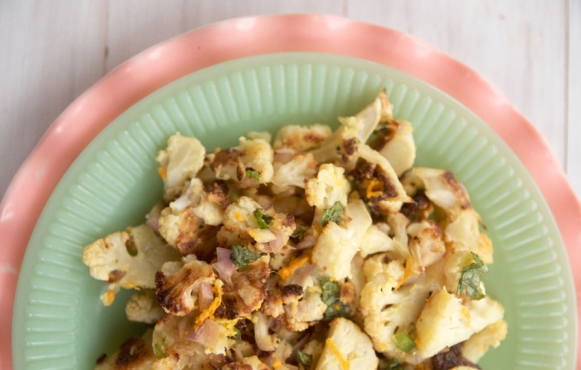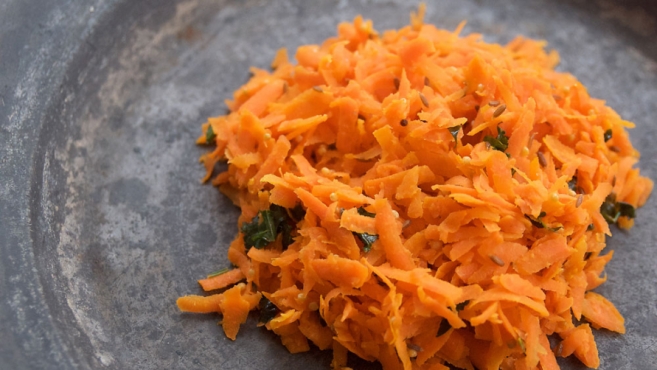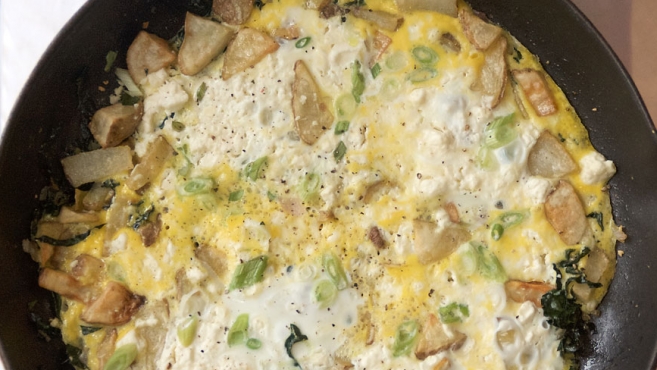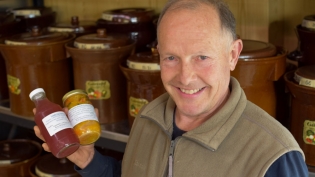
Returning to the Diets of our Grandmothers
Last summer, after harvesting tomatoes in my grandmother’s small backyard garden, we stood in her kitchen slicing the juicy red beauties to top our canned-tuna-salad sandwiches. My grandmother reminisced about her childhood in Ohio: snapping green beans on summer evenings, drinking fresh raw milk after the morning milking and collecting eggs from the chickens.
Now, looking out the window at her few tomato and pepper plants, she acknowledged the contrast with her present life and diet. I had heard these memories before. This time I recognized them not just as my grandmother’s story, but as a collective story of our food. A story that reaches far beyond a change in the meals on our plates and has impacted the very fabric of our health.
My grandmother’s diet changed when she moved away from her family home, a shift that the industrial revolution brought for many. The nourishing foods of meat loaf and liver, whole raw dairy, garden-grown vegetables, sourdough bread, soaked oatmeal porridge and sauerkraut for the winter months were replaced by the dazzling foods of technology—processed, refined and stripped of nutrients.
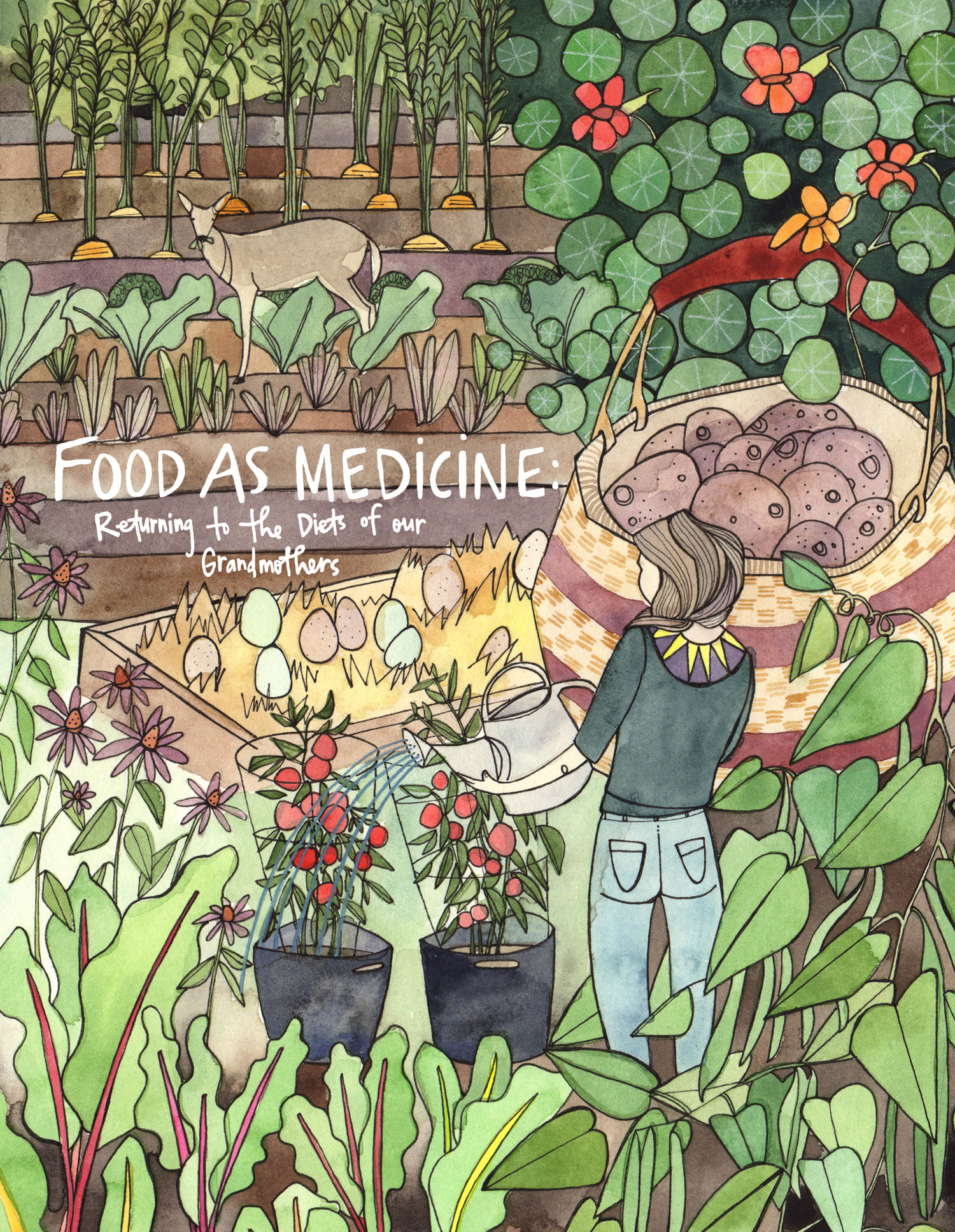
The Standard American Diet
In 1900, the leading cause of death was infectious disease, while chronic diseases accounted for only 10% of deaths, according to the U.S. Centers for Disease Control (CDC). This has now flip-flopped, with a 2015 CDC study showing seven of the 10 leading causes of death are chronic health conditions, with heart disease and cancer together accounting for nearly 48% of all deaths.
Much of our lifestyle has changed in the century since then, but an undeniable picture emerges: Our increase in consumption of processed and fast food—what nutritionists commonly call the Standard American Diet—has contributed to the nation’s high rates of chronic disease.
Chronic illness has direct links to diet. This is a connection that the medical community is recognizing more and more. The quality of our foods affects the quality of our lives. According to the World Health Organization, 80% of deaths from heart disease and stroke are caused by high blood pressure, tobacco use, elevated cholesterol and low consumption of fruits and vegetables.
Inflammation
Chronic diseases are often the manifestations of chronic inflammation. Our brilliant bodies respond to a stressor with acute inflammation, and this response sends a signal to our defense system to target the invasion and solve the problem, allowing our inflammation to subside.
However, most of us are placing our bodies in a state of constant stress. Sugar, starchy carbohydrates and industrial oils are just a few of the most inflammatory foods. Our bodies’ response to constant stress is to release low doses of inflammatory substances. Rather than healing, these substances gradually attack healthy blood cells, vessels and tissue instead of protecting them. This slow destruction of the immune system combined with bacterial imbalance makes our bodies a fertile ground for illness.
Our digestive systems hold the roots of our health. Every cell that makes up every organ depends on this system to provide the nutrients it needs to function. According to the Institute of Health and Sciences, 80% percent of the body’s immune cells are in the gut, also the home to approximately 500 different species of bacteria. One critical factor in overall health is the balance between beneficial bacteria and harmful bacteria. Chemical-laden processed food, pharmaceuticals, antibiotics, environmental toxins and stress throw our digestive system out of balance.
Whole Food Diet
Despite this bleak picture there is hope and good news: When people return to traditional, wholesome diets, diseases can be reversed and health restored. This has been proven, according to a Harvard Medical School of Public Health study that suggests positive nutritional changes go hand-in-hand with a decrease in chronic illness. These researchers advocate for a whole food diet informed by the traditions and ecology of real, well-grown, unprocessed food—food choices that are inherently anti-inflammatory and healing.
What does this mean for us today? While we can’t go back in time, we can take a world history tour and look at the nutritious traditional foods our ancestors have been eating for generations. Dinner plates centered on fresh and cooked vegetables and fruits, vitamins and trace minerals from animal fats and proteins, all organically grown and well-raised.
As a side dish, you’d find fermented foods, something nearly every traditional culture consumes—think yogurt, sauerkraut, beet kvass, sourdough bread or miso. These probiotic-rich foods help to repopulate the gut with beneficial bacteria, which aids in digestion and nutrient absorption.
Incorporating food as medicine is a process of not just returning to a different (or old) way of nourishing our bodies but of learning to listen in a new way. Our bodies communicate with us all the time, with signs of pleasure over how we nourish ourselves and symptoms that call us to make a change.
I watch the joy in my grandmother’s face as she tells me about the foods of her youth. I sense her pleasure is not solely from the remembered taste of a summer strawberry but from a different way of being in the world. I experienced her joy as an invitation held out to me—to move beyond eating a diet, a word laden with “good” and “bad,” and step into the opportunity to weave the connections between the garden, the food on our table and our medicine cabinet. All of which allow us to listen to the expert witness of our bodies’ deep wisdom—our very own bodies are wise, the rewards for trusting them are great.
Books/Web:
Nourishing Traditions Cookbook by Sally Fallon (the “bible” in this field)
The Nourished Kitchen by Jenny McGruther, cookbook and website NourishedKitchen.com
Weston D. Price Foundation — WestonPrice.org
Nutrition and Physical Degeneration — Weston D. Price


